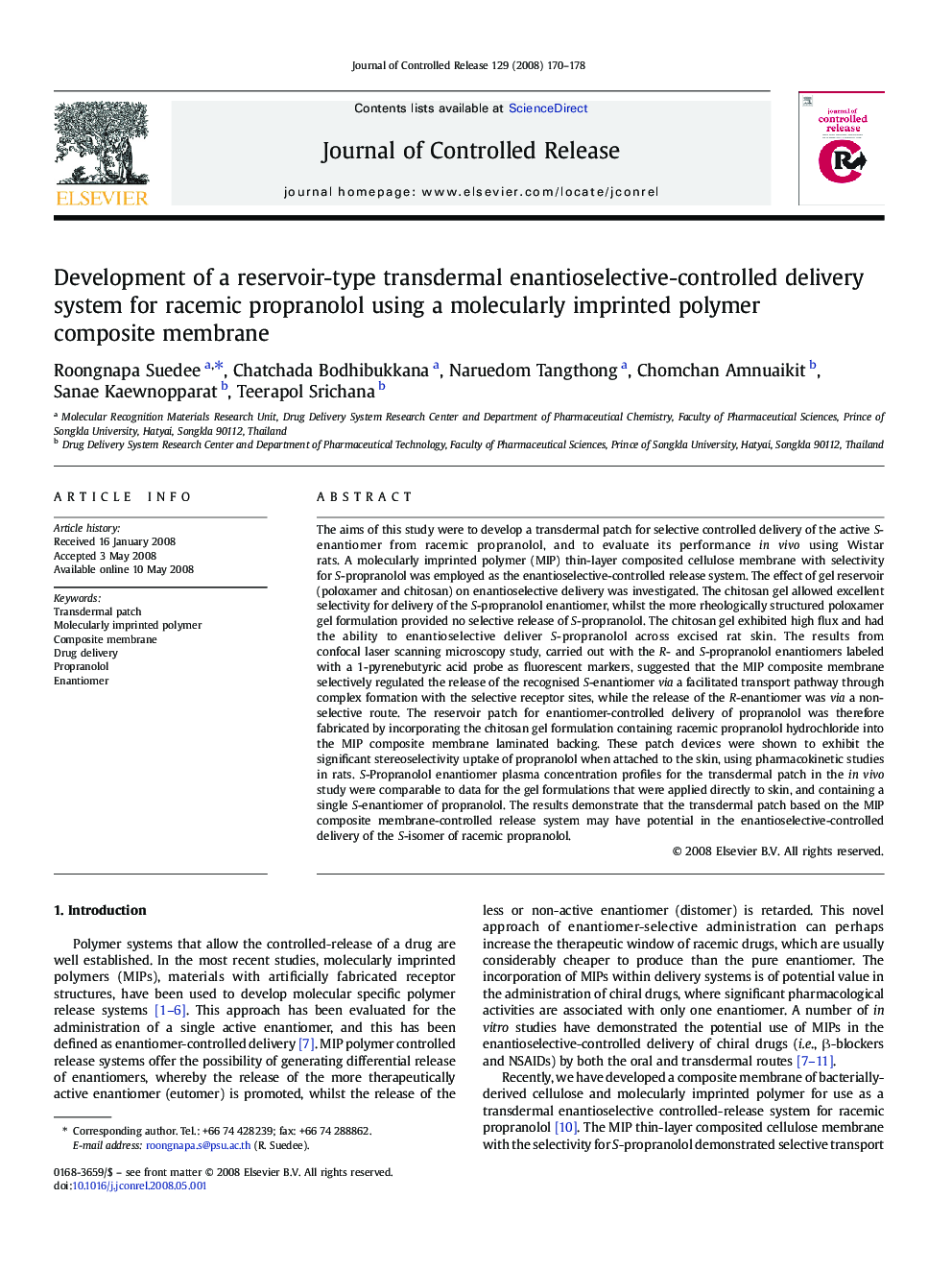| Article ID | Journal | Published Year | Pages | File Type |
|---|---|---|---|---|
| 1426670 | Journal of Controlled Release | 2008 | 9 Pages |
The aims of this study were to develop a transdermal patch for selective controlled delivery of the active S-enantiomer from racemic propranolol, and to evaluate its performance in vivo using Wistar rats. A molecularly imprinted polymer (MIP) thin-layer composited cellulose membrane with selectivity for S-propranolol was employed as the enantioselective-controlled release system. The effect of gel reservoir (poloxamer and chitosan) on enantioselective delivery was investigated. The chitosan gel allowed excellent selectivity for delivery of the S-propranolol enantiomer, whilst the more rheologically structured poloxamer gel formulation provided no selective release of S-propranolol. The chitosan gel exhibited high flux and had the ability to enantioselective deliver S-propranolol across excised rat skin. The results from confocal laser scanning microscopy study, carried out with the R- and S-propranolol enantiomers labeled with a 1-pyrenebutyric acid probe as fluorescent markers, suggested that the MIP composite membrane selectively regulated the release of the recognised S-enantiomer via a facilitated transport pathway through complex formation with the selective receptor sites, while the release of the R-enantiomer was via a non-selective route. The reservoir patch for enantiomer-controlled delivery of propranolol was therefore fabricated by incorporating the chitosan gel formulation containing racemic propranolol hydrochloride into the MIP composite membrane laminated backing. These patch devices were shown to exhibit the significant stereoselectivity uptake of propranolol when attached to the skin, using pharmacokinetic studies in rats. S-Propranolol enantiomer plasma concentration profiles for the transdermal patch in the in vivo study were comparable to data for the gel formulations that were applied directly to skin, and containing a single S-enantiomer of propranolol. The results demonstrate that the transdermal patch based on the MIP composite membrane-controlled release system may have potential in the enantioselective-controlled delivery of the S-isomer of racemic propranolol.
